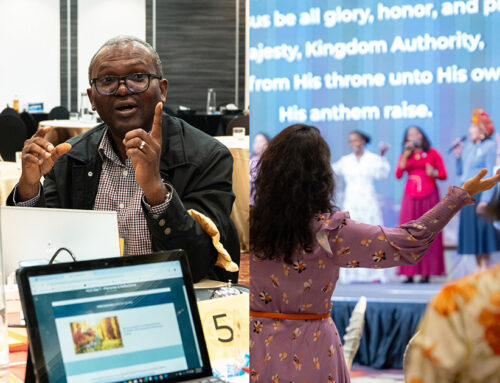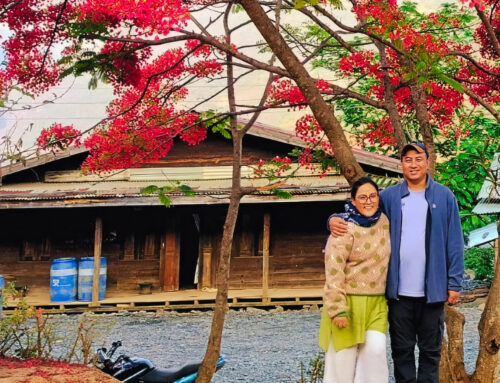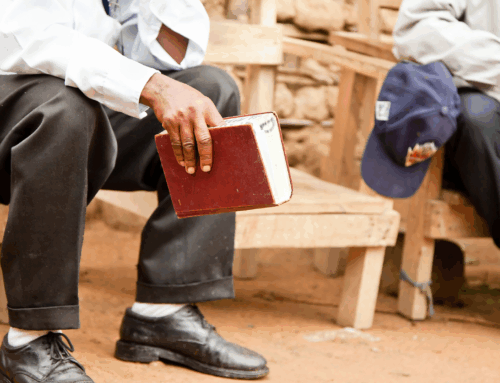Reaching Tribes in Nagaland
Atop the hills of Nagaland — northeastern India and northwestern Myanmar — live 16 major tribes of the Naga people. Each tribe speaks its own language and carries different cultural practices, but they share the traditional art of weaving and working in agriculture, with rice as a staple food. Many Naga people live in poverty and most are “Heraka believers,” which is a kind of Hindu religion. This makes reaching them with the Gospel difficult, Haggai leader and Nagaland resident Haden* says.
“There are few Naga believers working to share the Gospel in these areas, but a few years ago, a group of Haggai leaders began praying and became committed to reaching these people, and [a church group] eventually set up an outreach center in the area. It was a huge answer to prayer.”
That outreach center resulted in the salvation of three Naga people who are now devoted to sharing the Good News with their communities.
Together with his family, Haden, a government employee who lives and works in Nagaland, supported these new believers for three years while they studied at a Bible school.
“Now, all three are actively engaged in translating the Bible into their own languages, and our family is currently supporting a Naga student from Myanmar who is studying theology.”
Haden and his fellow Haggai leaders are replicating the Haggai model at the local level: instead of trying to reach the Naga people themselves, they are investing in the equipping of Naga believers who understand the language, culture, and religious beliefs of the people they seek to introduce to Jesus.
“Praise God for providing us with the opportunity to do a small work for the extension of His Kingdom,” Haden says.
Written by Jill Clair Gentry
*Name changed to protect privacy.
Reaching Tribes in Nagaland
Atop the hills of Nagaland — northeastern India and northwestern Myanmar — live 16 major tribes of the Naga people. Each tribe speaks its own language and carries different cultural practices, but they share the traditional art of weaving and working in agriculture, with rice as a staple food. Many Naga people live in poverty and most are “Heraka believers,” which is a kind of Hindu religion. This makes reaching them with the Gospel difficult, Haggai leader and Nagaland resident Haden* says.
“There are few Naga believers working to share the Gospel in these areas, but a few years ago, a group of Haggai leaders began praying and became committed to reaching these people, and [a church group] eventually set up an outreach center in the area. It was a huge answer to prayer.”
That outreach center resulted in the salvation of three Naga people who are now devoted to sharing the Good News with their communities.
Together with his family, Haden, a government employee who lives and works in Nagaland, supported these new believers for three years while they studied at a Bible school.
“Now, all three are actively engaged in translating the Bible into their own languages, and our family is currently supporting a Naga student from Myanmar who is studying theology.”
Haden and his fellow Haggai leaders are replicating the Haggai model at the local level: instead of trying to reach the Naga people themselves, they are investing in the equipping of Naga believers who understand the language, culture, and religious beliefs of the people they seek to introduce to Jesus.
“Praise God for providing us with the opportunity to do a small work for the extension of His Kingdom,” Haden says.
Written by Jill Clair Gentry
*Name changed to protect privacy.
Reaching Tribes in Nagaland
Atop the hills of Nagaland — northeastern India and northwestern Myanmar — live 16 major tribes of the Naga people. Each tribe speaks its own language and carries different cultural practices, but they share the traditional art of weaving and working in agriculture, with rice as a staple food. Many Naga people live in poverty and most are “Heraka believers,” which is a kind of Hindu religion. This makes reaching them with the Gospel difficult, Haggai leader and Nagaland resident Haden* says.
“There are few Naga believers working to share the Gospel in these areas, but a few years ago, a group of Haggai leaders began praying and became committed to reaching these people, and [a church group] eventually set up an outreach center in the area. It was a huge answer to prayer.”
That outreach center resulted in the salvation of three Naga people who are now devoted to sharing the Good News with their communities.
Together with his family, Haden, a government employee who lives and works in Nagaland, supported these new believers for three years while they studied at a Bible school.
“Now, all three are actively engaged in translating the Bible into their own languages, and our family is currently supporting a Naga student from Myanmar who is studying theology.”
Haden and his fellow Haggai leaders are replicating the Haggai model at the local level: instead of trying to reach the Naga people themselves, they are investing in the equipping of Naga believers who understand the language, culture, and religious beliefs of the people they seek to introduce to Jesus.
“Praise God for providing us with the opportunity to do a small work for the extension of His Kingdom,” Haden says.
Written by Jill Clair Gentry
*Name changed to protect privacy.















